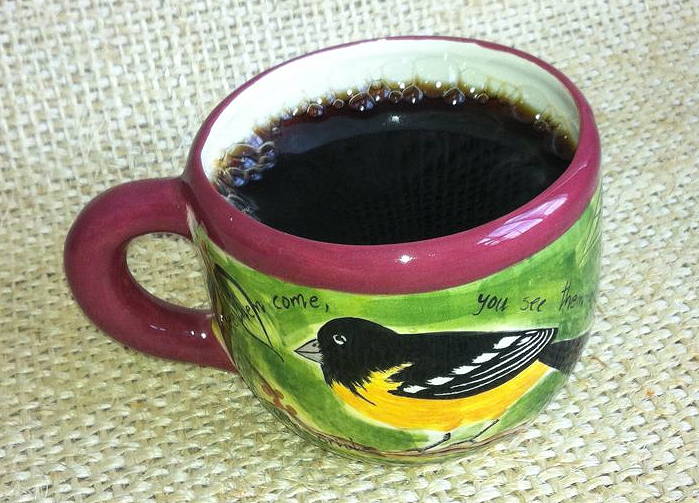



Enjoying a great cup of coffee… For me it represents the culmination of all the attention that has gone into growing and harvesting, roasting, brewing, and at last, tasting it. I feel connected to the whole process and I show my appreciation by surrendering to the pleasure of the drink.
Right now I’m considering the results of a roasting experiment. My life is full of these. Great roasting is much more than firing up the roaster and letting it rip until the beans are dark. Great roasting mingles intuition with science in a trial and error process judged by taste.
As heat is applied to the beans, molecules form and reform, much like in cooking. The chemistry of roasting is so complex than no-one has a scientific grasp on its details. But, the science guides our intuition and vice versa in our trial and error discovery process.
We roast our coffee with process control software. That means that we control the temperature of the beans throughout the roast. So the question is, what temperature profile do we want? It turns out that, even with the same beans, two roasts that both have a final temperature of say 445 F, but that get there through different time-temperature paths can be the difference between ambrosia and bitter swill.
So science tells us the methodology to follow, and chemistry tells us some generalities about molecules that are created in the Maillard reaction phase combining and recombining to form the many-hundreds of delicious complex sugars we might taste as caramel or nut or chocolate. Intuition and experience tell us what to try next to reward our senses, and tasting it tells us if we were right or wrong.
Today we are trying a new roast profile for the Peru Norte. It is a new crop. The profile we used on last year’s crop is resulting in a harsher cup than we would like. We decided to try a steeper slope with more curvature at the beginning of the roast and a slightly lower final temperature.
Then we had to wait 2-3 days. When coffee is first roasted its flavour is “closed” and dull. Very much like red wine needs to breath before it “opens up”, roasted coffee needs to “de-gas” for a couple of days sometimes longer.
So finally, after being tended on a Bird Friendly Certified coffee farm, hand harvested, milled, dried and and shipped to our roastery, roasted with our new profile, rested for 3 days, ground and finally hand-drip brewed, I’m now considering the result.
The dry fragrance of the fresh grounds is heavenly showing a touch of vanilla or almond. The cup is smooth and balanced, is slightly sweet with dominant caramel flavour and undertones of nut. It is somewhat bright and leaves a long aftertaste that becomes increasingly sweet and fruity as the cup cools.
We’ll go with this for the house coffee in the café for a while.
The pleasure in Birds and Beans coffee is total: It is just amazing to sit in the backyard sipping a cup of phenomenal coffee that supports the continuation of songbird migration while actually seeing and hearing the returning songbirds. Would you like to join me?